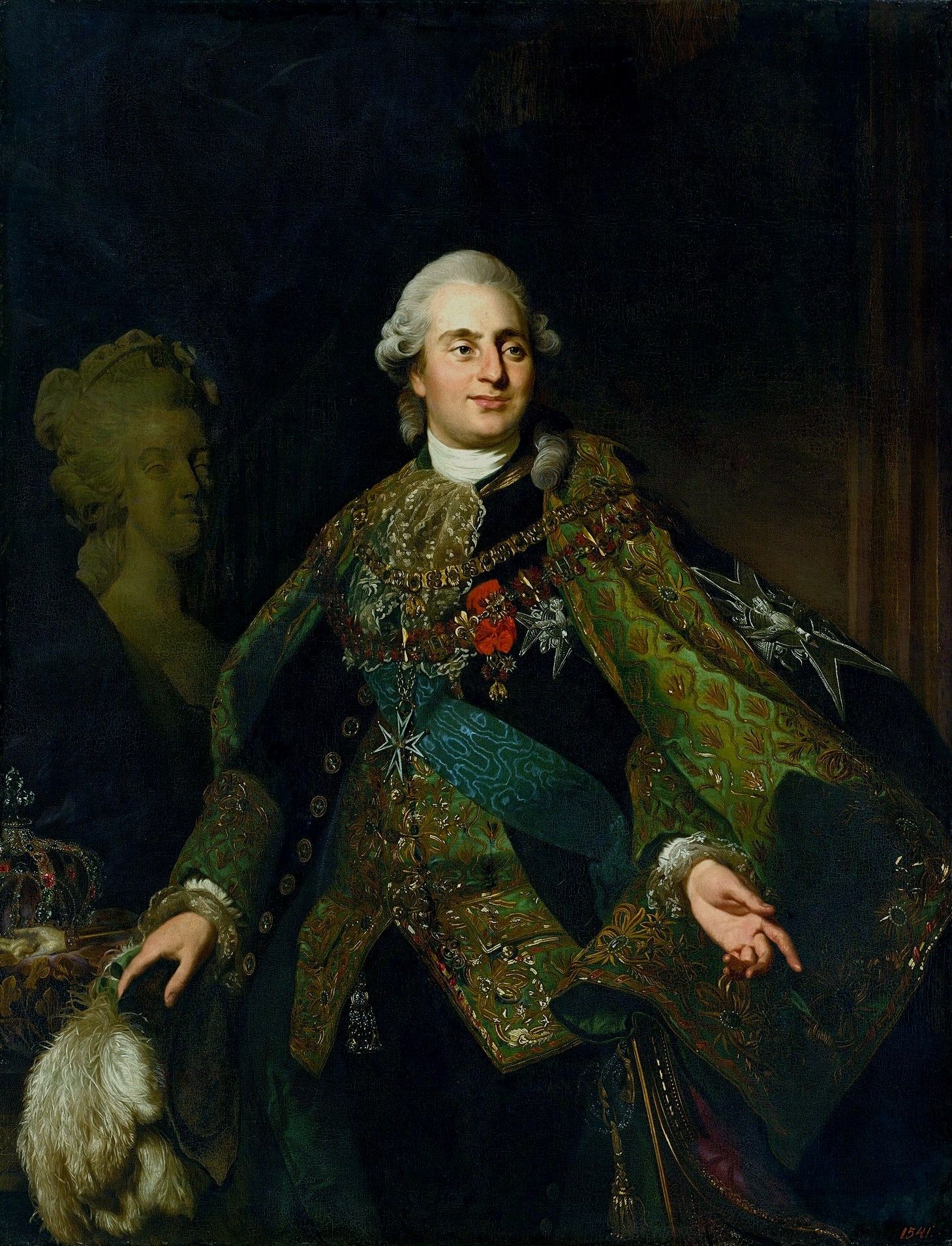The last king of Versailles could never boast of having inherited his grand-father's remarkably good looks. Whereas Louis XV had been generally thought to be the handsomest man at his own court, Louis XVI was not so fortunate.
The king's silhouette was not one that blended well with his surroundings. He was not a short man (for the time period) but lacked the grace and elegance of bearing which otherwise characterized the aristocracy. When he walked, he tramped heavily. One observer claimed that he seemed more like "a peasant behind his plough" than the king of one of the greatest powers in Europe.
The impression of the king was not aided by the fact that he had a remarkably poor posture - although without slouching. Naturally shy and timid, Louis had spent the majority of his childhood attempting not to draw attention to himself. As such, he rarely stood with that confident stance expected from a leader. His page, Hézecques, admitted that he did look well when he sat upon his throne. Yet, that same page vehemently denied the rumours that the king slumped forward rather than standing erect. It would seem that even when he stood up straight, his figure could not quite command the necessary respect.
 |
| A detail of the king in his full royal regalia - the delicately blue eyes, the good nose, the small but plump lips and the rounded chin are all very clear |
The king's face expressed kindness rather than authority; nevertheless, it was admitted (even by his critics) that he had a certain regality over his facial features. It is hardly a wonder that his courtiers did not know what to think of their new sovereign. His physical appearance seems to have been contradictory: an awkward body but a regal face, a king of France but a sluggish walk.
His face was not ugly but not attractive per se. His forehead was somewhat receding and his head was held aloft by a remarkably thick and short neck. There is one trait that recurs in most contemporary descriptions of the king: a certain melancholia. Even when he had just ascended to the throne there was something about his features that exuded just that - melancholy.
Louis XVI suffered tremendously from short-sightedness. He was one of the unfortunate ones whose short-sightedness worsened considerably through his life. His eyes were a lighter blue (another difference from the dark eyes of Louis XV) and the eye-lids were quite heavy.
The king's sight also had an impact on the furniture he commissioned. In order to avoid the every-day unpleasant encounters with sharp corners, his furniture was often rather rounded. By 1788-89, he was described as being so afflicted by his short-sightedness that he could not recognize people standing three paces from him.
 |
| Judging from this portrait, it would seem that the king's blonde hair from his childhood has faded into a slightly darker tone |
Louis' poor eye-sight did nothing to make his movements more graceful. Understandably enough, his sight had made him nervous of walking into things - particularly considering that eyes were constantly on him. Not even the trappings of power could adorn him with a more elegant air. When he wore a sword by his side, he would occasionally stumble over it and according to the Marquise de La Tour du Pin "he never knew what to do with his hat".
Notwithstanding his short-sightedness, his eyes were quite fine. A very peculiar shade of blue whose shade it was said that no painter ever truly captured, they had a gentle and kind expression.
Ever since his early childhood, Louis had struggle with his weight. He had been over-weight for years which certainly did not help his movements either. However, he was not the morbidly obese man that history usually portrays him as. When he ascended to the throne, he was well-built but not over-weight. Particularly his legs were admired at this point in life. Once he got older and gained weight, he could never rid himself of that swaying walk which most Bourbon-rulers had.
 |
| This portrait of Louis shows his rather corpulent nature |
Another feature that was much affected by his fluctuating weight was his chin. It was strong, but round; that roundness was often accentuated by a double-chin when he was in his heavier periods. As for his nose, that was one facial feature which seems to have passed the inspection of his eagle-eyed courtiers. It was well-proportioned to the rest of his face.
The king's teeth were uneven which made his smile somewhat awkward. However, it should be remembered that even today most people have uneven teeth and it is hardly a sure sign of unattractiveness. Also, his lips were full and plump which was not unbecoming to him.
The king's hair was blonde when he was a child. Yet, when the fashions dictated that wigs were worn the majority of the time, it often made little difference what colour a person's hair was. Still, he was the nightmare of the royal coiffeurs. The reason was that he cared very little about his physical appearance and never took much care of his carefully arranged locks.
 |
| The king's figure appears large but not obese - as he was described when he was in his thinner periods |
It was particularly this indifference to his appearance that made his courtiers embarrassed. Such a court, where fashion and personal looks was vital, could not look favourably on a king who preferred simple suits to the elaborate ensembles of silk, laces and embroidery.
History has much maligned the figure of Louis XVI. He has been painted as both ugly and stupid; neither of which was true. Although, he was never considered handsome, Louis had one of those faces that exudes kindness and simplicity, but lacked the grace of the ideal French monarch - and his contemporaries never forgave him for it.

No comments:
Post a Comment